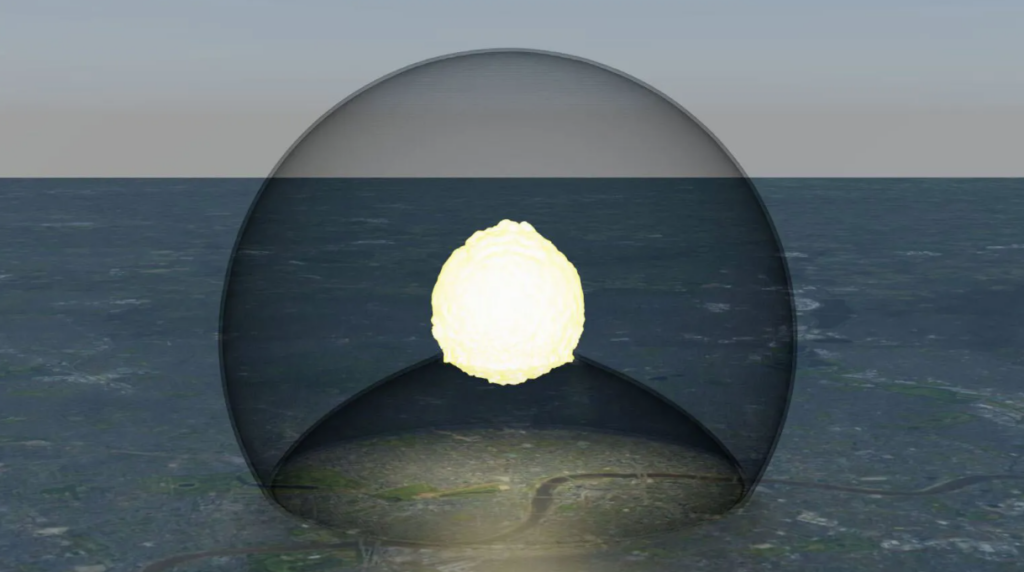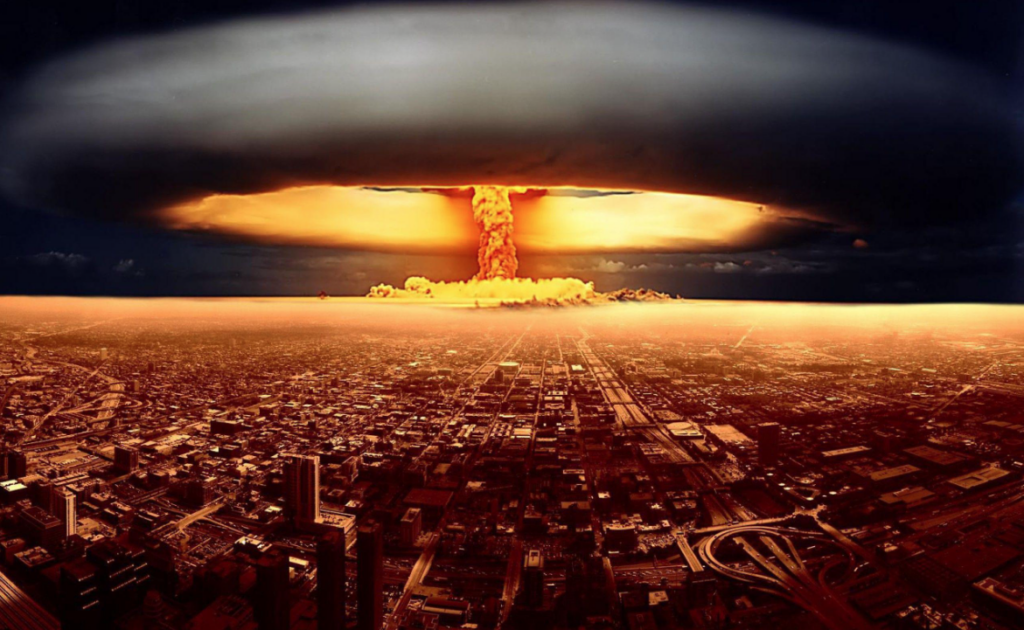A nuclear warhead’s destructive power, capable of unleashing hundreds of kilotons of TNT, has been the subject of a new study by Dimitris Drikakis, a fluid dynamics researcher at the University of Nicosia in Cyprus. The study’s purpose was to shed light on the ongoing risks of nuclear escalation and to explore potential survival methods in the event of a nuclear explosion. The recent tick forward of the Doomsday Clock, to 90 seconds until midnight, by the Bulletin of the Atomic Scientists, due to increasing nuclear tensions in Ukraine, only highlights the urgency of the study’s findings.

Nuclear physicist Ferenc Dalnoki-Veress at the Middlebury Institute of International Studies at Monterey highlights that if there are multiple structures between your location and the incoming blast wave, they can reduce the speed and force of the air. Those in a basement may also experience reduced blast effects. Although many have a pessimistic view that there’s nothing to be done, it’s not entirely true, says Dalnoki-Veress. However, reality is, most people, even in moderate damage zones, won’t survive. The majority don’t reside or work in nearly windowless, reinforced concrete structures or near concrete bunkers. To truly be in a safe place, one must be in a secure location like a vault. Most people live in less fortified timber-frame buildings.
Dylan Spaulding, an earth scientist and nuclear expert at the Union of Concerned Scientists, warns that finding a safe place during a nuclear explosion is not guaranteed. Concrete structures with metal reinforcement designed for seismic safety may withstand the modeled pressures, but conventional wooden or brick buildings without reinforcement will not.

The winds generated by the blast were found to be even more dangerous than the initial blast itself and could throw people and objects around at high speed, making enclosed spaces crucial for survival. However, Ferenc Dalnoki-Veress, a nuclear physicist, notes that not many people have access to nearly windowless, reinforced-concrete buildings or concrete bunkers, with most residing in timber-framed or other less-armored structures.
The dangers posed by a nuclear explosion are not limited to the initial blast wave. While the high-speed shockwave is certainly a major threat, it is just one aspect of the catastrophic event that follows. In addition to the initial blast, nuclear weapons also release dangerous ionizing radiation and heat, which are followed by radioactive fallout.

Ionizing radiation is extremely hazardous to human health, and can cause a range of effects, from skin burns to organ damage and cancer. This type of radiation can be transmitted through exposure to the skin or through inhalation, and its effects can be felt for many miles from the epicenter of the explosion.
While the study by Dimitris Drikakis at the University of Nicosia in Cyprus provides some hope for those who might find adequate shelter in the immediate aftermath of a nuclear explosion, it is important to note that radiation exposure could still pose a significant threat to survivors. People who survive the initial blast may still be at risk of serious health effects from the radiation, and the range of exposure could extend for tens of miles from the site of the explosion.
Drikakis’s study specifically looked at the impact of a “strategic” nuclear warhead, which would be deployed using an intercontinental ballistic missile. However, there are also “tactical” nuclear weapons, which are dropped by planes onto battlefields. Although these explosions play out differently, they can still cause immense damage and potentially expose more people to lethal levels of radiation.

Spaulding highlights that the threat of nuclear weapons extends beyond just the blast wave. Nuclear explosions also release ionizing radiation and heat, as well as radioactive fallout that can have devastating health effects. Even if someone is far enough away from the blast to avoid being killed instantly, exposure to radiation through skin or inhalation can cause skin burns, organ damage, and cancer.
Russia and the US have smaller “low-yield” nukes with 5 to 10 kilotons of yield, which are less powerful than the 15-kiloton bomb dropped on Hiroshima. Despite their smaller size, they can still cause devastating damage and cross a dangerous threshold, potentially escalating a conflict and leading to the use of larger weapons.
Drikakis and colleague Ioannis Kokkinakis simulated the effects of a 750-kiloton warhead, like those in Russia’s arsenal, detonating above a metropolis and studied how the supersonic shockwaves would propagate through a three-room concrete structure located in the moderate damage zone, a few miles from the epicenter. The results showed that if a nuclear explosion were to occur in a modern city, some people in the surrounding areas might have a chance of survival if they find shelter in a thick concrete structure with minimal openings, like a bank or a subway, and make it to a back room corner with limited openings within five to ten seconds of the initial flash.

Humanity has only used nuclear weapons once in war, when the US dropped two atomic bombs on Hiroshima and Nagasaki, Japan, at the end of World War II in 1945. These devastating weapons resulted in the loss of over 100,000 lives and caused serious injury to many more. The bombings in Japan and the tests conducted at the Nevada Test Site offer some of the only tangible evidence of the types of structures that can withstand the force of an atomic blast and to what extent. This evidence is crucial in understanding the destructive power of nuclear weapons and the measures that can be taken to mitigate the damage caused by such explosions.
Dylan Spaulding, an earth scientist and nuclear expert, warns against the notion of complete safety in a nuclear explosion, as the blast wave is only a part of the story. Nuclear weapons also release ionizing radiation and heat, followed by radioactive fallout, making strong, concrete structures with metal reinforcement the best bet for survival.
